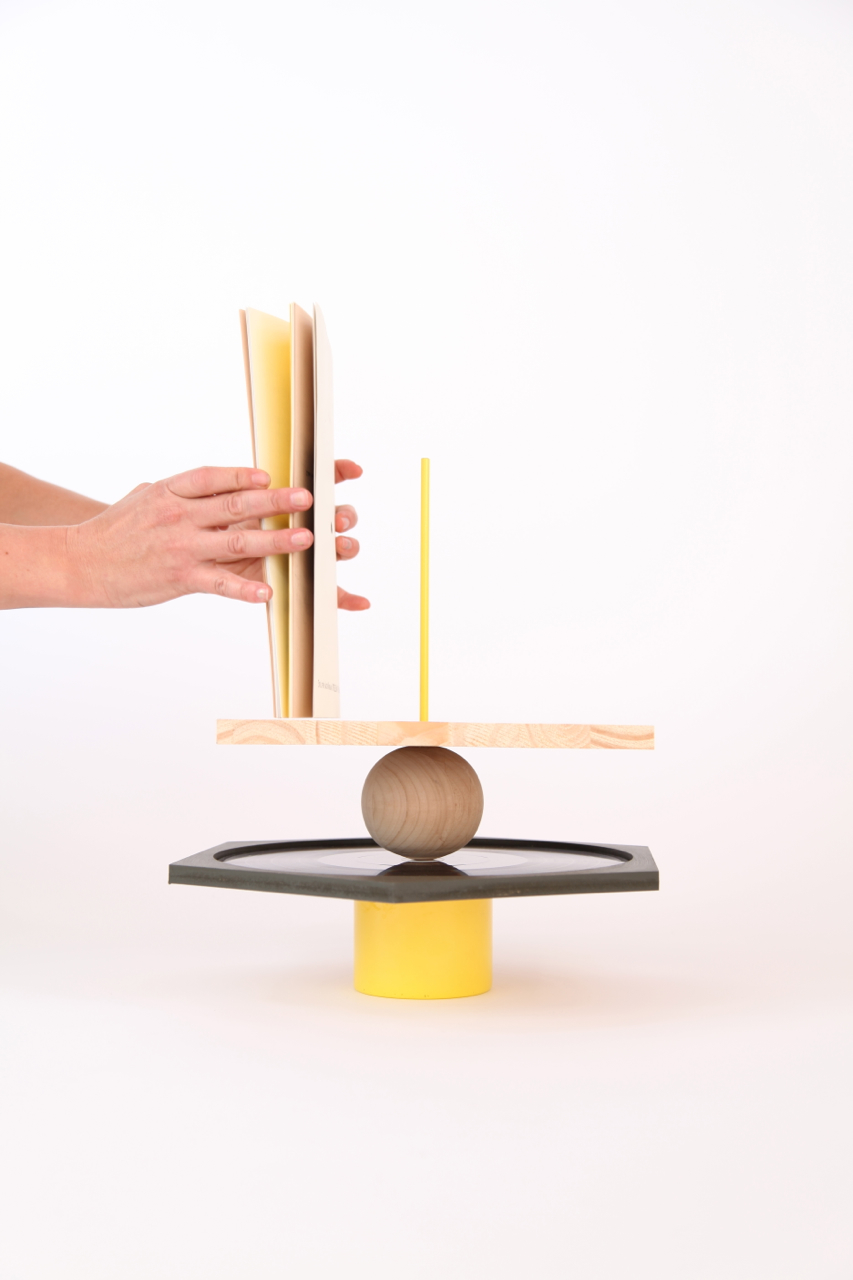
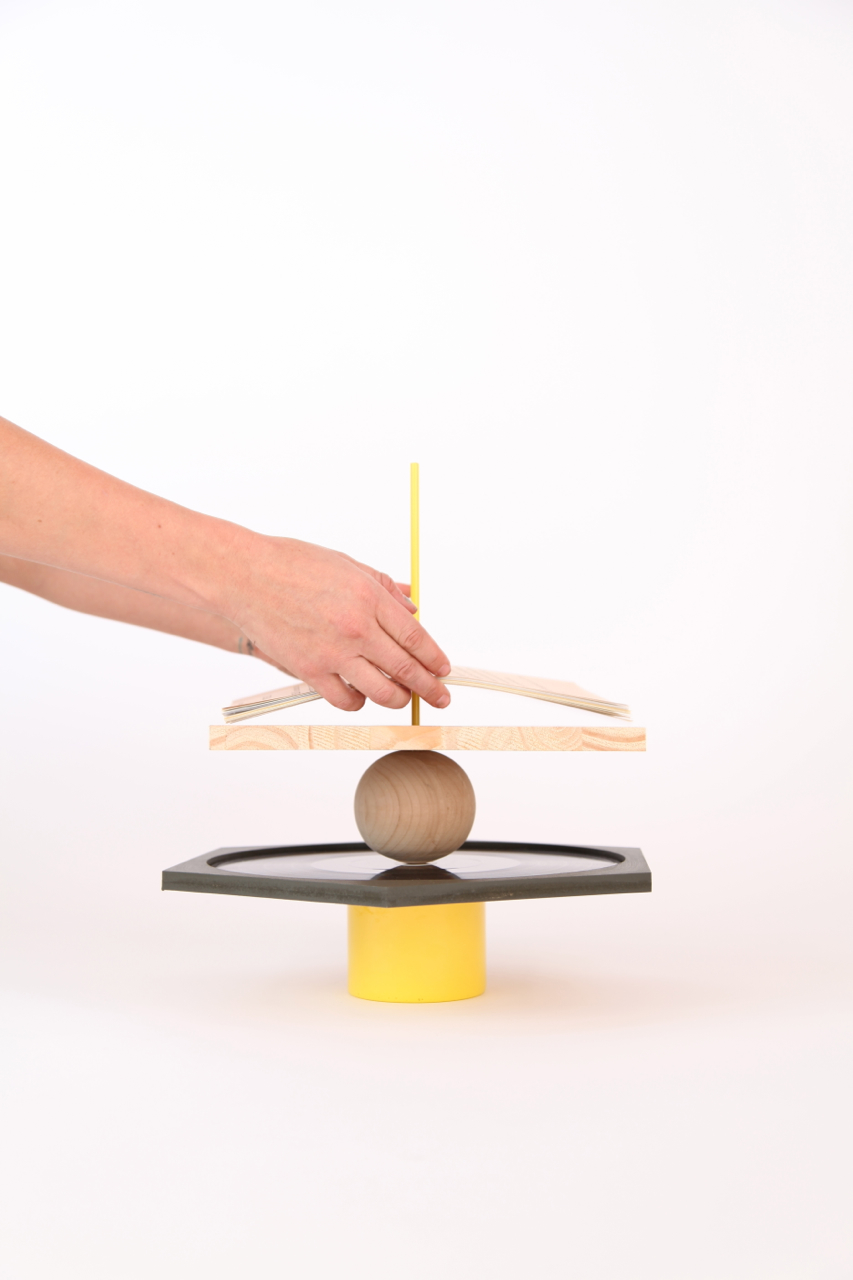
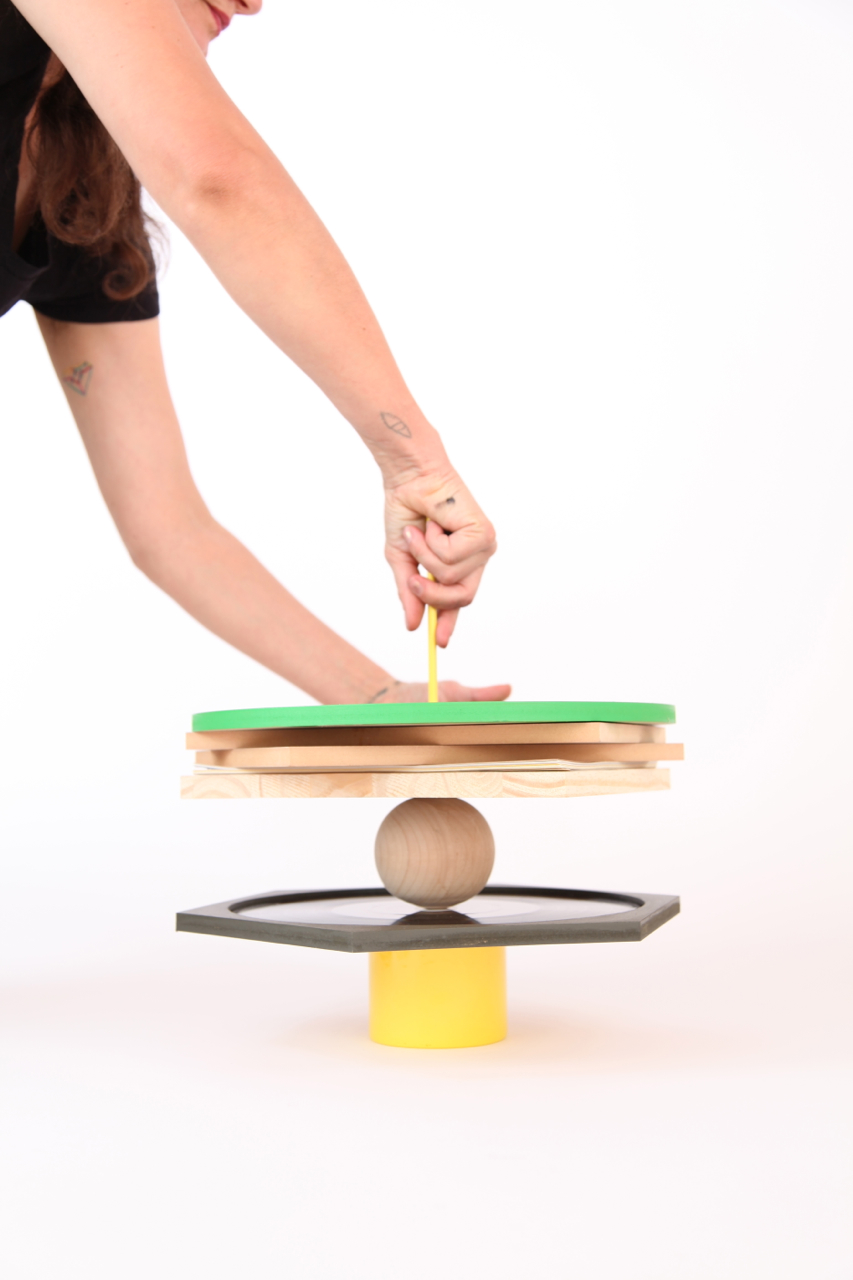
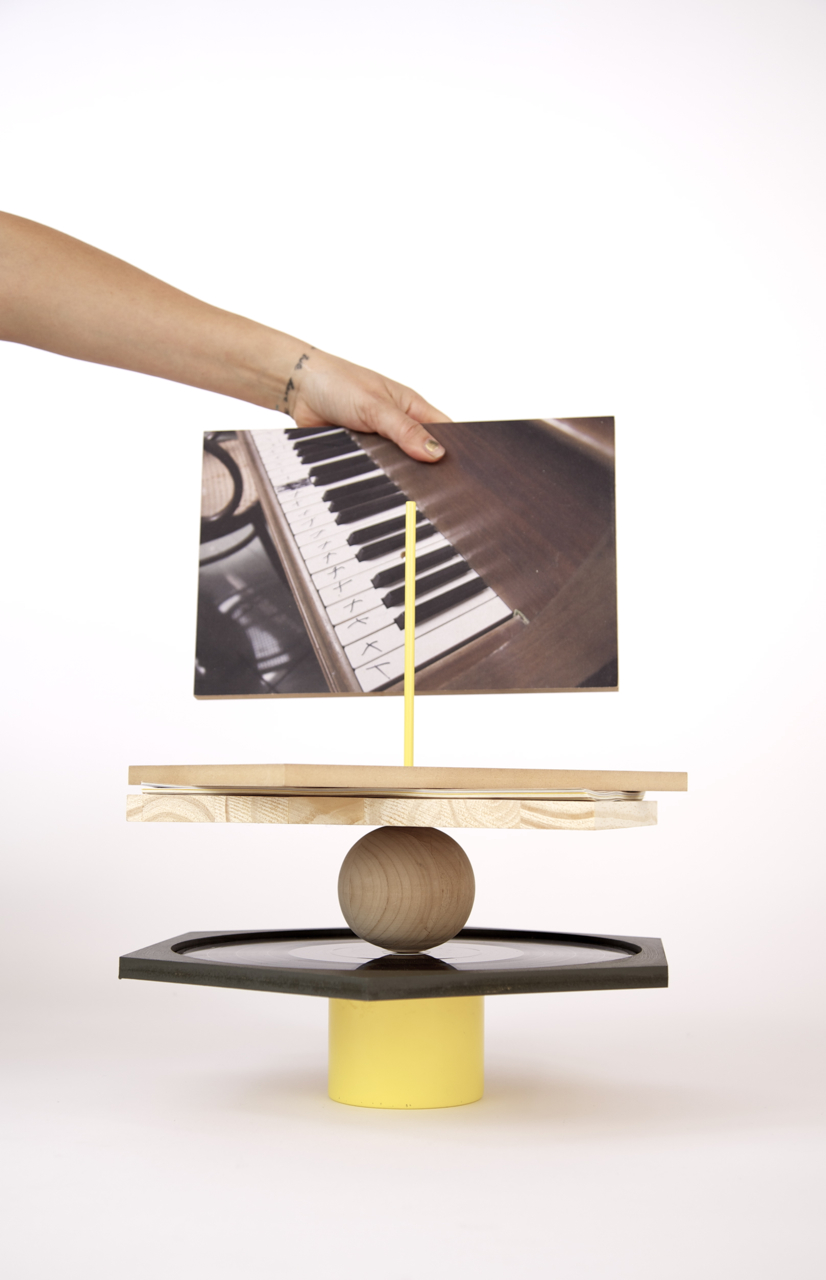
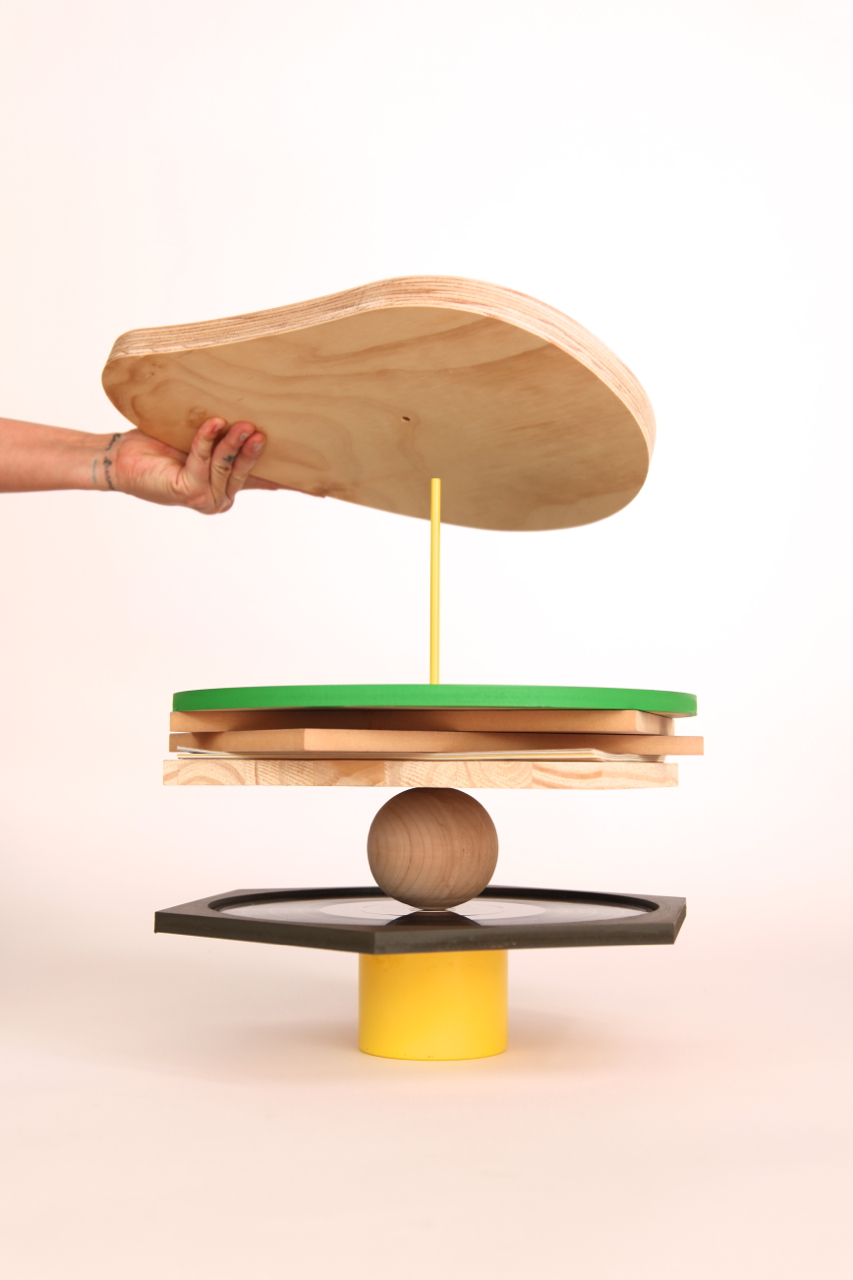
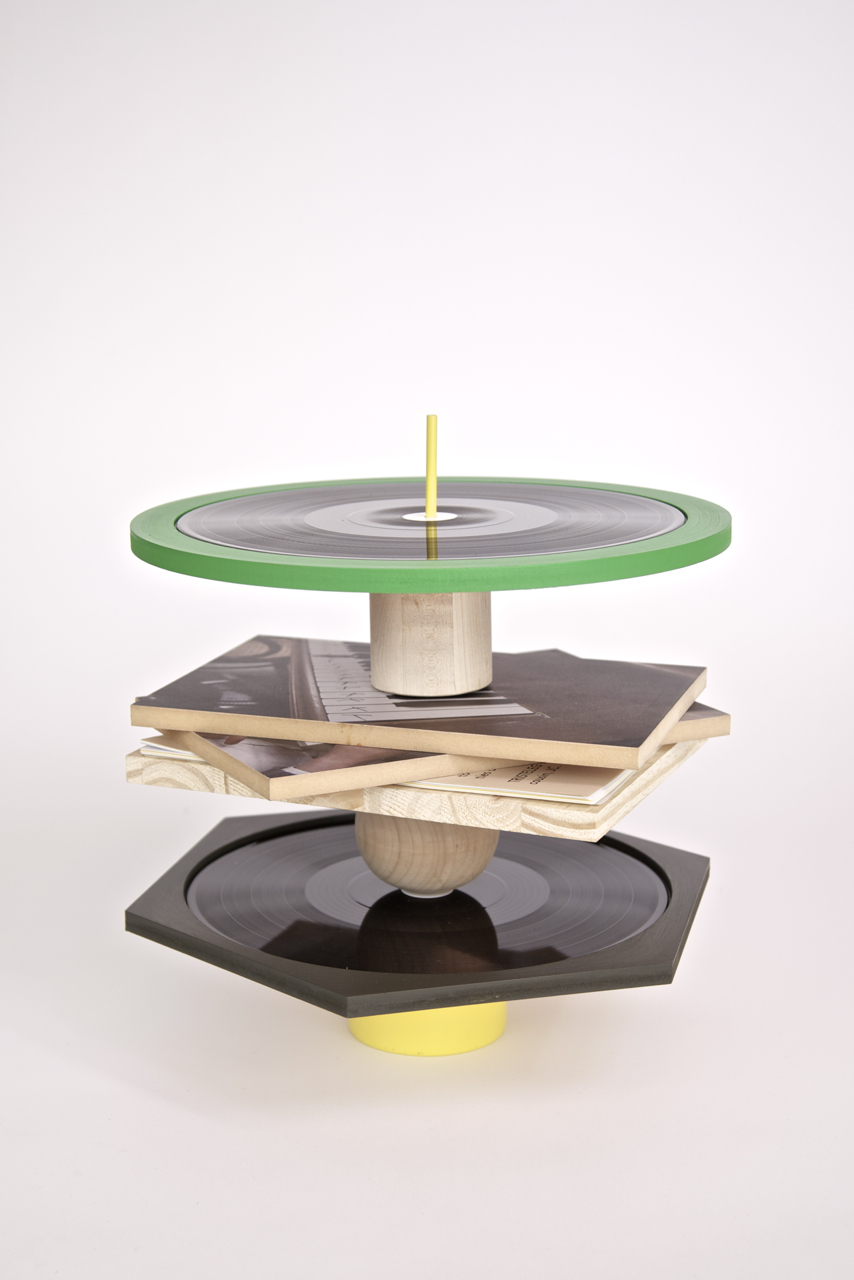
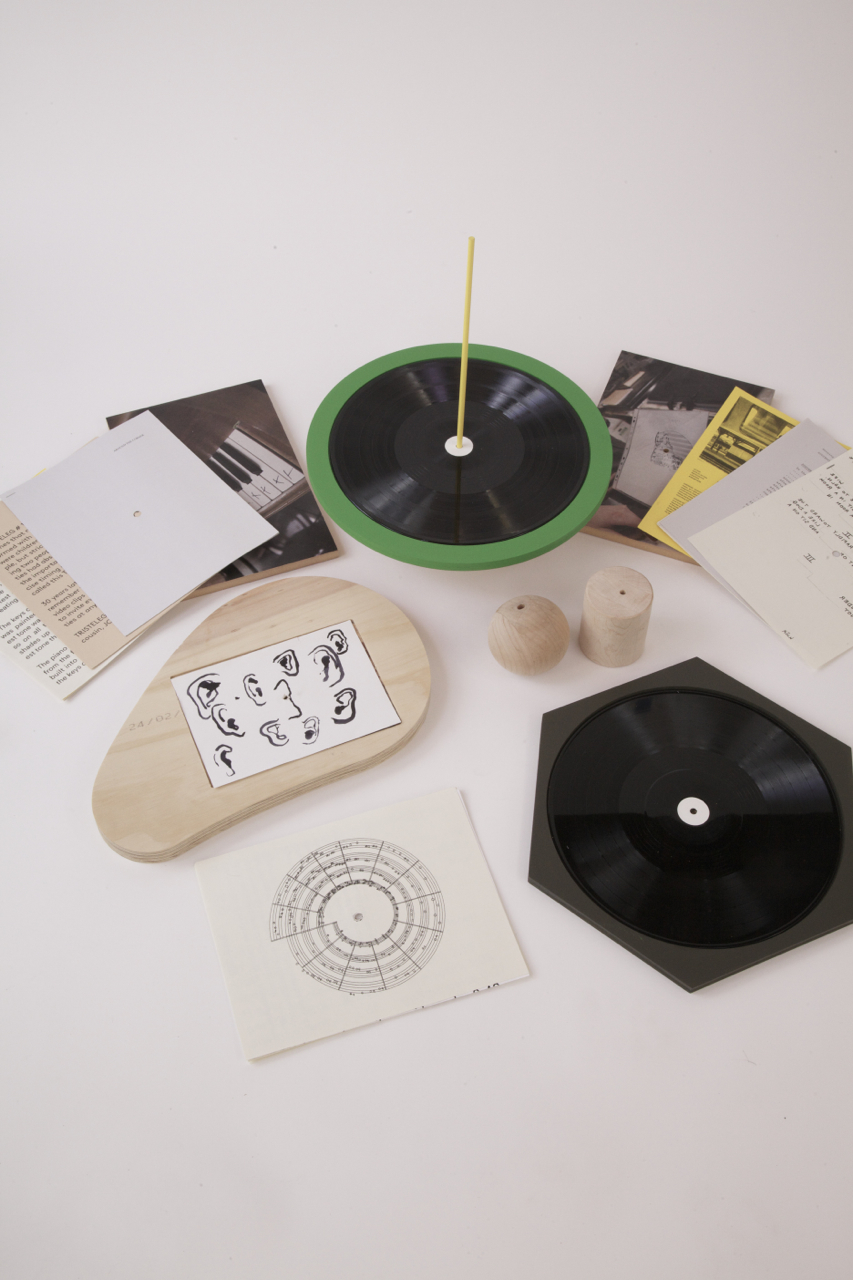
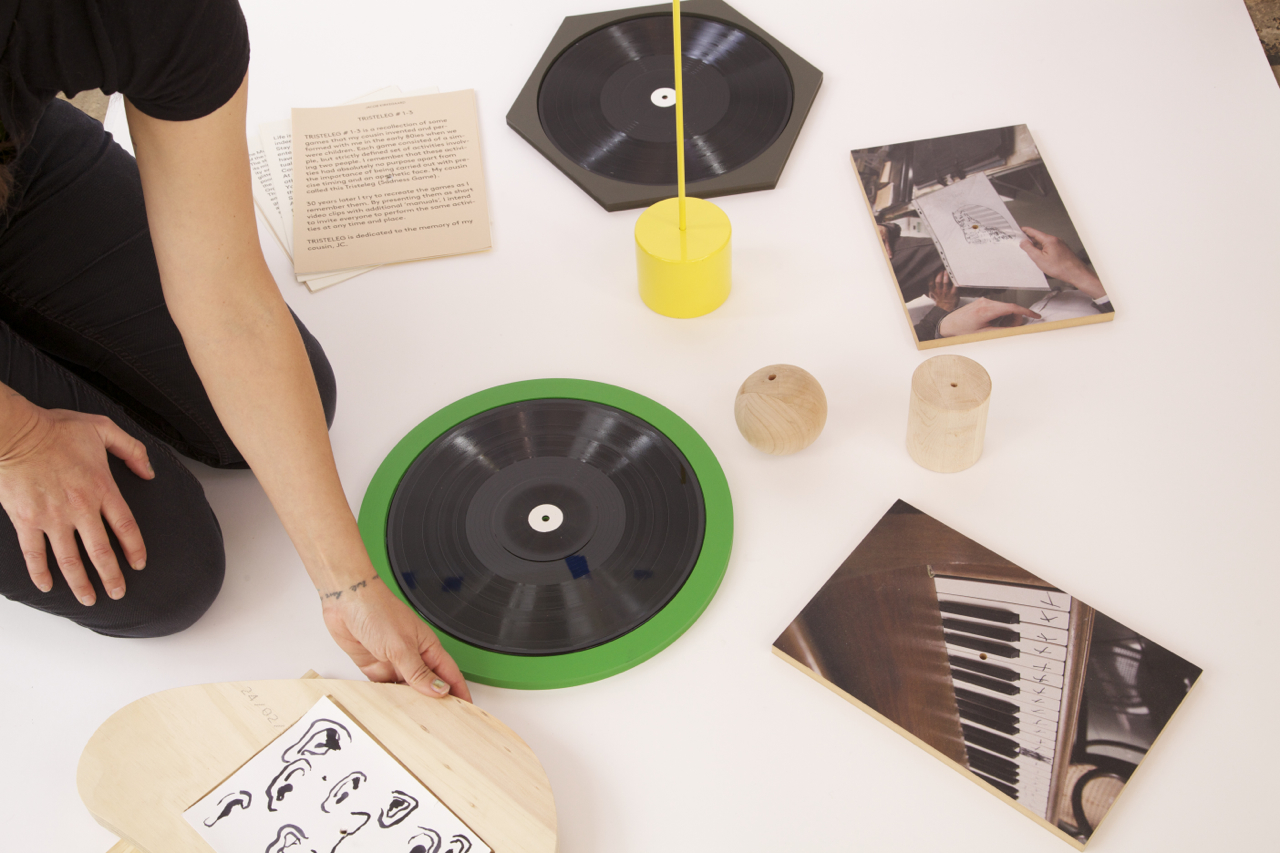








FLUX BOX, Scott Barry, Neil Doshi and Chiara Giovando, Sculptural Publication
2013, on-going
FLUX BOX is both a document and an artwork. It is a publication made in connection with the Exhibition Hammer Without a Master: Hanning Christiansens Archive that invited 10 sound artists and composers to respond to Danish Fluxus artist Henning Christiansen’s archive. The exhibition was the result of a six-‐month research fellowship. I spent countless hours in Christiansen’s extensive archive and produced a publication called the Produced in an edition of 7 specifically for other art archives around the world, the FLUX BOX is a circular work that makes an interconnected feedback loop between exhibition, performance and archive.
The FLUX BOX is designed to decay each time a researcher or archivist uses it. This points to questions that arise when we consider archiving a temporal form like sound art or Fluxist art that is inherently fragile, fleeting or impermanent. A dedicated display system was installed within the exhibition for the FLUX BOX. Artifacts and small works produced during live events were exhibited here. In this way time-‐based works participated in the visual exhibition by leaving small residues, and the show became a living archive by continually cataloging itself.